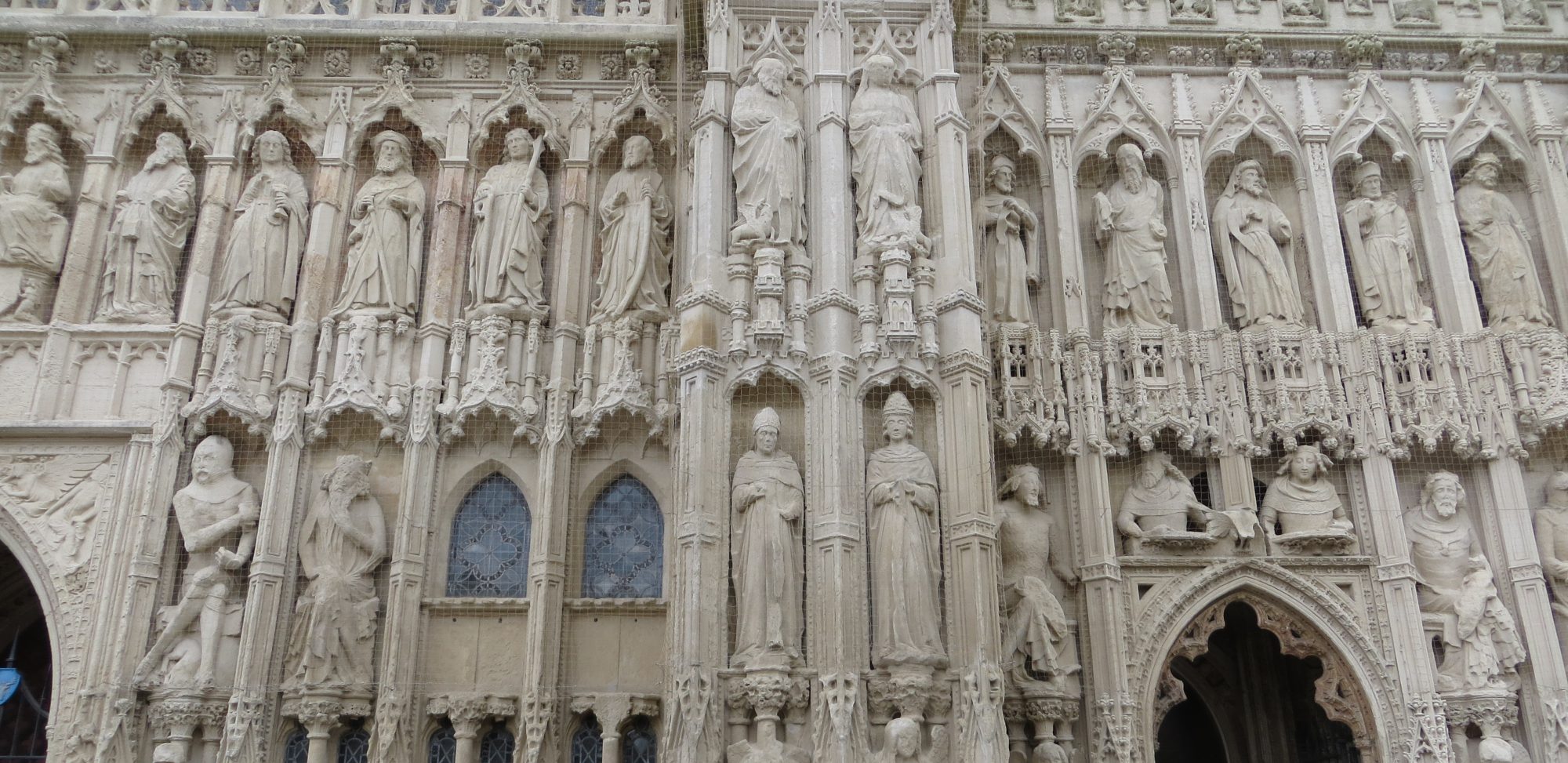Part Six – The Representative Male
Jesus is the first born son. Jesus is male. Anybody who stands in the great passion play of a Christian worship service represents Jesus. But in order to do so, they must also be male. If they are female, we could only suppose that they are Mary or one of the women who follow the Lord and who stand at the foot of the cross. These women, even more than the male disciples, gaze at the Lord, and we are able to follow the direction of their gaze. You can see this if you look at any of the images in the windows of any church. You can tell which of these figures is Jesus by following the gaze of those around him. If a woman is situated in the middle of the image, she is Mary, the mother of the Lord, gazing down at her infant. If women are situated on one or both sides, looking at the male figure in the middle, that figure is Jesus. That’s how we identity him. From the context we can guess that she is Mary Magdalene, or they are Martha and Mary, or the woman taken in adultery. In any of the scenes portrayed there may be crowds of people, but we can guess that the person they are all looking at is the Lord just because they are all looking at him.
The job of a disciple is to point to Jesus. The apostles serve us just by doing this. John the Baptist has often been portrayed pointing, with one finger stretched out towards the Lord. They are showing us which member of the crowd is Jesus. There are many people standing around. How do we know which one is Jesus? We know because of the posture and stance of the disciples; their body language us tells us where to look. Their gaze focused ours. And in the church service, we are all performing the same role for the watching world. The world is looking at us: we help it by looking at Jesus. We are all looking the same way, towards the Lord, who stands at our head. One male Christian stands before us, while others, the servers, stand on each side of him. They frame him; they are our viewfinder; just as the cherubim hover the throne of God, just as the angels sat on either side of the empty tomb, so the servers stand each side of Christ so we can see him for who he is. There may be two servers or many; just as there may be two angels or many, two or three disciples or thousands upon thousands of worshipping Christian saints. This is what we see. This is the vision before us. For other people, arriving after us, who first see us and then see who we are looking towards, we are part of this vision.
Perhaps it is because Protestants have shunted Mary off that the only figure visible before them is Jesus – alone – without any of his company around him to point him out to us. The result is this desire to stand in Jesus’s place rather than Mary’s, and so to be female priests.
But what about women? Doesn’t a female Christians have the same rights to stand at the front and represent Jesus while the congregation represent the disciples? No. She doesn’t. No Christian has rights. No male Christian and no female Christian has rights. In the Church no one talks about rights. That is just not how we think. We talk only about grace, and we say that grace has picked us up and now enables us to slowly following, learning and imitating Christ’s action towards us, and enabled by his grace, we do so by reproducing that action towards other people. We don’t say anything about rights. And so we never claim that anyone has been left behind, or set back, because some right has been denied. ‘If I am generous, are you envious?’, asks the master in the parable of the workers in the vineyard (Matt 20.15). It is the particular charism of everybody to follow, to be in the body, to look to the head, but not to stand at the front as Jesus.
When a male stands at the front, he can represent a male, and since Jesus is male, he can represent Jesus. Why is this? It is because the sexual dimorphism of human beings into male and female are given by nature, and so is part of the whole package of creation presented to us by God. It is God’s work, and God’s gift to us. The gift is not for us to spurn. It is for us to discover how it is good, and how the enables lots of good things to unfold. The sexual dimorphism found in nature is not unfortunate and it is not a mistake, and so is not something we have to correct or override or abolish. By attempting to do so we could only frustrate human flourishing. What form this differentiation of roles takes is worked out by each man and woman in their marriage together. But resentment at the thought that there is some such differentiation is a failure of gratitude and an unhappiness that spills out into endless failures to allow other people to be different from us, and from their difference to provide for us what we cannot provide for ourselves.
